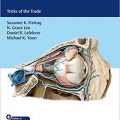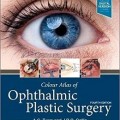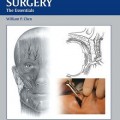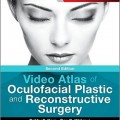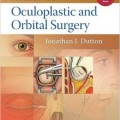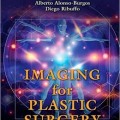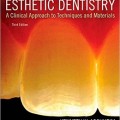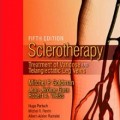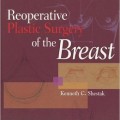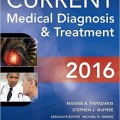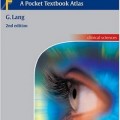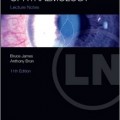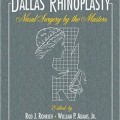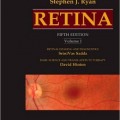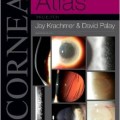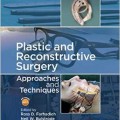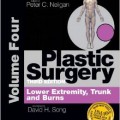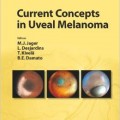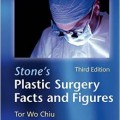دانلود کتاب مشاوره در اکولوپلاستیک: ۴۹ سوال بالینی
Curbside Consultation in Oculoplastics: 49 Clinical Questions, 2ed
Curbside Consultation in Oculoplastics has been updated into a Second Edition!
The Second Edition contains new questions and is completely updated!
Curbside Consultation in Oculoplastics: 49 Clinical Questions, Second Edition contains new questions and brief, practical, evidence-based answers to the most frequently asked questions that are posed during a “curbside consultation” between surgical colleagues.
Dr. Robert C. Kersten and Dr. Timothy J. McCulley have designed this unique reference in which oculoplastic specialists offer expert advice, preferences, and opinions on tough clinical questions commonly associated with ocuplastics. The unique Q&A format provides quick access to current information related to oculoplastics with the simplicity of a conversation between two colleagues. Images, diagrams, and references are included to enhance the text and to illustrate common clinical dilemmas.
Some of the questions that are answered inside the Second Edition include:
- What lasers do you prefer for facial resurfacing?
- When do you worry that an eyelid growth is malignant?
- What are the general treatment guidelines for graves ophthalmopathy?
- How do I know when to order and MRI or CT?
- What is the best approach to manage trichiasis?
- How do I decide whether to perform an enucleation or an evisceration?
Curbside Consultation in Oculoplastics: 49 Clinical Questions, Second Edition provides information basic enough for residents while also incorporating expert pearls that even high-volume ophthalmologists will appreciate. Residents, fellows, and practicing physicians alike will benefit from the user-friendly, casual format and the expert advice contained within.
Review
About the Author
Contents
Question 1 What Are the Current Thoughts on Blepharoplasty?
Question 2 How Can I Address Midface Descent and Volume Depletion?
Question 3 What Is the Current Surgical Approach for Brow Ptosis Repair?
Question 4 What Are Your Recommendations Regarding Asian Blepharoplasty?
Question 5 What Is Your Favorite Filler and Why?
Question 6 What Lasers Are Available and Which Do You Prefer for Facial Resurfacing?
Question 7 What Is the Difference Between Laser Resurfacing and Chemical Peels?
Question 8 What Alternatives to Botox Are Available and How Do They Compare?
Question 9 When Should I Be Concerned About Systemic Disease in a Patient With Blepharoptosis?
Question 10 Is There Ever a Genetic Basis for Acquired Blepharoptosis?
Question 11 Why Does Age-Related Blepharoptosis Occur?
Question 12 How Should I Manage Blepharoptosis?
Question 13 How Do I Manage a Child With Congenital Blepharoptosis?
Question 14 How Should I Manage Ectropion?
Question 15 How Does Transconjunctival Lower Eyelid Entropion Repair
Question 16 What Is the Role of Tarsorrhaphy?
Question 17 What Commercially Available Materials Can Be Used as Tissue Substitutes in Eyelid Reconstruction?
Question 18 When Do You Worry That an Eyelid Growth Is Malignant?
Question 19 When Should Mohs Surgery Be Employed?
Question 20 Should Periocular Capillary Hemangiomas Be Treated With Corticosteroids, Beta-Blockers, or Surgery?
Question 21 When Does an Eyelid Lesion Need to Be Biopsied?
Question 22 How Should Lentigo Maligna Be Managed?
Question 23 What Topical Therapy Can I Use to Treat Cutaneous Malignancies?
Question 24 What Systemic Medical Therapy Is Available for Treatment of Cutaneous Malignancies?
Question 25 How Do I Know When to Order MRI or CT?
Question 26 What Is IgG4 Immune-Related Inflammation of the Orbit and How Do You Treat It?
Question 27 Can You Tell Me About Orbital Infection Due to Hospital- and Community-Acquired MRSA?
Question 28 What Are the General Treatment Guidelines for Graves’ Ophthalmopathy?
Question 29 When Should Corticosteroids Be Used for Thyroid Eye Disease?
Question 30 Do You Think Radiation Is Ever Indicated for Graves’ Disease?
Question 31 Should Local Chemotherapy Play a Role in the Management of Lacrimal or Other Orbital Malignancy?
Question 32 What Is New in the Management of Orbital Lymphoma?
Question 33 How Do You Treat Children With Orbital Fractures?
Question 34 What Implant Do You Like Best for Repairing Orbital Fractures?
Question 35 Can You Tell Me About Stereotactic Image Guidance and How It Is Used in Orbital Surgery?
Question 36 What Is Traumatic Optic Neuropathy?
Question 37 What Should I Do for an Orbital Hemorrhage?
Question 38 How Should Canalicular Lacerations Be Managed?
Question 39 What Is New in the Management of Adult Tearing Patients?
Question 40 When Managing Patients With Congenital Nasolacrimal
Question 41 What Medications Cause Canalicular Obstruction and How Do You Prevent or Manage It?
Question 42 Is Anything New in the Management of Patients With Canalicular Obstruction?
Question 43 What Role Can Endoscopes Play in Oculoplastic Surgery?
Question 44 What Are American College of Chest Physicians Recommendations for Management of Antithrombotic Therapy (Anticoagulation) Perioperatively and Are They Applicable to Oculoplastic Surgery?
Question 45 How Do I Decide Whether to Perform an Evisceration or Enucleation?
Question 46 How Should I Manage Congenital Anophthalmos/Microphthalmos?
Question 47 What Is the Best Approach for Trichiasis?
Question 48 How Should I Manage My Patients With Bell’s Palsy?
Question 49 What Is Currently Recommended for the Treatment of Herpes Zoster Involving the Face and Eyelids?
لینک کوتاه : https://bookbaz.ir/?p=45947
نویسنده : Robert C. Kersten MD FACS , Timothy J. McCulley MD
ناشر : Slack Incorporated; 2 edition
سال انتشار : 2015
زبان کتاب : انگلیسی
نوع فایل : PDF
تعداد صفحات : 288
(ISBN) شابک : 1617119172
قیمت کتاب درآمازون : $73.53
حجم فایل : 7 MB











